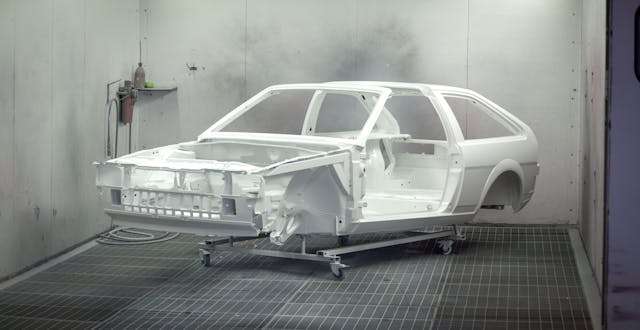
You have figured out that your car needs new paint to give it a new, fresh look. So, the question is, how is it going to get painted? Well you can take your car to a professional or choose to paint it yourself. It depends on your skill level, budget, and schedule.
If you are on a limited budget and you trust your skills, it may be a better option to opt for DIY car painting. Well, can you paint your own car? The truth is that you can do it. However, there are things you need to know before you attempt painting your car yourself.
In this article, we discuss key things you need to know before attempting DIY car painting. Let’s delve into them.
- Assess your skill level.
Painting a car is not as easy as it may seem. It is not like painting a wall. It requires precision and a steady hand, especially if you are going to use a spray gun. So this means that not everyone can do it. So before you opt for a DIY car painting, you need to assess your skills. If you are new to painting, it is best to practice on a spare car panel or an old vehicle first before you paint your car.
- Understand the costs
Well, even though you have opted for a DIY approach and it can save you some money than hiring a professional, you must still consider other costs associated with the task. Some of the costs associated with DIY car painting are the purchase of automotive paint, primer, and clear cost, which can be quite expensive. You will also need tools such as a spray gun, air compressor, sanding materials, masking tape, and protective gear. You may also have to factor in additional expenses such as paint thinner, polishing compounds, and possibly a rented garage or spray booth for an excellent workspace.
- Choose the right location.
The next thing you need to do now is to pick an ideal location where you are going to paint your car. There are several factors you need to pay attention to when choosing a location. First, you need to ensure that the location has adequate ventilation because paint fumes can be very toxic so it is advisable to work in a well-ventilated area. You also need a clean garage or a professional booth because dust and debris can ruin your paint job. Lastly, consider weather since temperature and humidity can affect drying and adhesion, and wind can blow debris onto wet paint. So, avoid painting your car outdoors.
- Choose the paint
Choosing the right paint is crucial if you want maximum results. There are various kinds of paints you can choose from, including acrylic enamel, acrylic lacquer, and urethane. All these paints have their unique features and benefits. So it is better to research them and pick one that suits your preferences.
It is also important that you choose a paint that matches the existing color of your car if you don’t want to do a full repaint. You can always use the vehicle’s paint code for reference. Also, know the quantity of paint you need. The amount of paint you need will depend on the size of your car.
- Gather your tools and get to work.
Now that you have you have everything you need for the task, it is time to get started. Remember that DIY car painting can be very time-intensive. So expect to take several days on the project, especially if you don’t have extensive experience and the car is a bit larger.